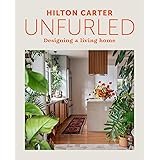Have you ever walked into a room in your own home and felt a subtle sense of unease, a lingering feeling that something just isn’t quite right? Perhaps the space feels less inviting than you imagined, or it simply looks perpetually messy despite your best efforts to tidy up. It’s a common experience, like a melody that’s just a little bit off key, making the whole song feel disjointed. The good news is, these feelings often stem from common home decor mistakes that are surprisingly easy to identify and fix. The accompanying video above expertly highlights five key areas where many homeowners inadvertently sabotage their living spaces. Let’s dive deeper into each of these fundamental design principles, transforming your understanding of what makes a house feel like a truly welcoming home.
Conquering Clutter: Reclaiming Your Visible Spaces
One of the most pervasive home decor mistakes involves allowing clutter to take root and spread across every available surface. Imagine your living room as a carefully composed symphony; too many discordant instruments playing at once create an overwhelming cacophony. When tables, shelves, and countertops become repositories for an endless assortment of random items, the visual noise instantly makes a room feel chaotic and much smaller than it actually is. This isn’t just about tidiness; it’s about the psychology of space and how visual overload impacts our sense of calm.
Adopting a “less is more” mindset can radically transform these areas, much like a skilled editor prunes unnecessary words from a manuscript to reveal its true brilliance. Begin by curating your visible belongings, selecting only those pieces that serve a purpose or bring genuine joy. For the items that need to remain accessible but aren’t display-worthy, embrace stylish and functional storage solutions. Elegant woven baskets can discreetly house remote controls or throw blankets, while decorative trays offer a polished corral for keys and mail. This strategic containment allows essential items to remain within reach without sacrificing the serene visual flow of your home.
Illuminating Your Home: The Art of Layered Lighting
Another prevalent error in home decoration is relying solely on a single, often harsh, overhead ceiling light to illuminate an entire room. This approach is akin to painting a masterpiece using only one flat, primary color; the result inevitably lacks depth, warmth, and dynamic interest. A solitary light source casts stark shadows and makes a space feel unwelcoming, erasing the very nuances you’ve worked to create with your furniture and accents. It often leaves corners feeling dark and forgotten, much like background characters in a play that never get their moment in the spotlight.
The solution lies in embracing the power of layered lighting, transforming a one-dimensional scene into a rich, inviting tableau. Think of it as building different tiers of light, each serving a unique function and contributing to the overall ambiance. Floor lamps provide general illumination and can visually anchor a seating area, while strategically placed table lamps offer task lighting and inject pools of warm, localized glow. Incorporating accent lighting, such as picture lights or subtle LED strips, can highlight architectural features or artwork, adding another layer of visual intrigue. Using warm LED bulbs across all fixtures further enhances coziness, wrapping the room in a soft, welcoming embrace that beckons you to relax.
Mastering Scale and Proportion: Furniture That Fits
Ignoring the critical principles of scale and proportion when selecting furniture or rugs represents another significant home decor misstep. Picture trying to fit an enormous grand piano into a tiny studio apartment, or conversely, placing a postage-stamp-sized rug in a vast ballroom. The resulting visual imbalance is immediately jarring, creating an awkward and uncomfortable aesthetic that disrupts the entire harmony of the room. This oversight can make a space feel either overly cramped and suffocating or vast and empty, like a conversation where one person dominates and the other whispers.
The remedy for this common design flaw begins with a simple yet often overlooked tool: the measuring tape. Before making any purchase, carefully measure your room’s dimensions and consider the natural flow of traffic within the space. Furniture should complement the size of the room, leaving ample breathing space around each piece to prevent a crowded appearance. A large, plush sectional might be perfect for a spacious family room, but a more streamlined sofa and armchairs would suit a smaller living area. Similarly, a rug should ideally extend under the front legs of all primary seating arrangements, grounding the space and visually uniting different furniture pieces. Choosing appropriately sized items allows your furniture to coexist gracefully, ensuring a comfortable and visually balanced environment.
Harmonizing Hues: Crafting Cohesive Color Schemes
One of the most visually chaotic home decor mistakes involves haphazardly mixing too many random colors within a single space without any overarching color scheme. Imagine a painter throwing every color onto a canvas without thought; the outcome is often a jumbled mess rather than a cohesive work of art. When various shades clash and compete for attention, the room loses its sense of intentionality and design consistency, feeling accidental and disorganized. It’s like listening to an orchestra where every instrument plays a different tune, creating dissonance instead of melody.
To cultivate a serene and aesthetically pleasing environment, establish a guiding color scheme, much like a composer chooses a key for a musical piece. A simple yet effective approach involves selecting one neutral base color for larger elements like walls and major furniture, then introducing two complementary accent shades. For instance, soft gray walls paired with a cream sofa provide a calm foundation, while vibrant teal cushions and a mustard yellow throw add personality and visual interest. This deliberate selection ensures that every element works in concert, contributing to a balanced and inviting atmosphere. A well-chosen palette ensures your home feels thoughtfully curated, not randomly assembled, reflecting a considered taste and design understanding.
Adorning Walls: Adding Character to Your Vertical Canvas
A frequently overlooked home decor mistake is leaving walls completely bare, stark, and devoid of any character. Blank walls are like an unwritten story or an empty stage; they fail to engage the viewer and can make a space feel cold, impersonal, and unfinished. This oversight often communicates a sense of impermanence, as if the residents have just moved in and haven’t yet bothered to unpack their lives. Such a space can feel hollow, lacking the personal touches that truly transform a house into a home.
Fortunately, adding character to your walls doesn’t require an extravagant budget or priceless artworks. Think of your walls as a vast, blank canvas awaiting your personal touch, a reflection of your personality and experiences. Framed art, whether it’s a treasured print or a DIY creation, instantly injects color and narrative into a room. Mirrors not only serve a functional purpose but also reflect light and make smaller spaces feel more expansive. Floating shelves can display cherished books, small plants, or decorative objects, adding texture and depth. Even a gallery wall featuring personal photos can infuse a deeply personal warmth that expensive pieces often cannot replicate. These thoughtful additions create visual interest, completing the room’s narrative and making it feel genuinely lived-in and loved.
By addressing these common home decor mistakes, you can profoundly transform your living environment, much like a skilled gardener prunes a plant to encourage robust growth. Remember, fixing even one or two of these issues can significantly alter the ambiance of your space. These adjustments emphasize balance, comfort, and the integration of elements that genuinely reflect your personality. Incorporating living plants, plush textiles like rugs and cushions, and a well-planned lighting scheme always infuses fresh, positive energy into any room. Your home is not merely a showroom; it is a sanctuary, a personal retreat that should always feel inviting and authentically yours. Embrace the journey of refining your space, starting with the simplest change, and watch as small improvements blossom into a beautifully transformed home. These home decor mistakes are easily correctable, promising an instant uplift to your everyday living experience.











